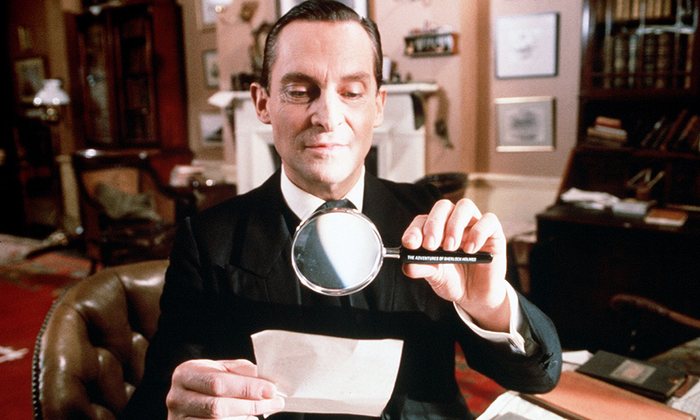
Having been portrayed on screen in excess of two hundred and fifty times, producing any list of film titles featuring Sir Arthur Conan Doyle’s Sherlock Holmes (who first appeared in print in 1887) is no easy task. The earliest known Homes film is thought to be Sherlock Holmes Baffled a thirty-five second U.S short made in approximately 1900.
Over the years audiences have been treated to increasingly varied interpretations of Holmes: an actor drafted in to support Watson’s fictitious stories in Without a Clue (1987), an animated mouse, a teenager at boarding school and more recently as a 93 year old struggling with dementia in 2015’s Mr Holmes.
Content, tone, setting, budget and target audience all vary but for film buffs there are at least three, possibly two actors, who seem to constantly jostle for the top screen portrayal of Holmes – a discussion this list of 10 Sherlock Holmes Films You Must See will doubtless fuel all the more – the game is afoot…
10. The Private Life of Sherlock Holmes (1970)
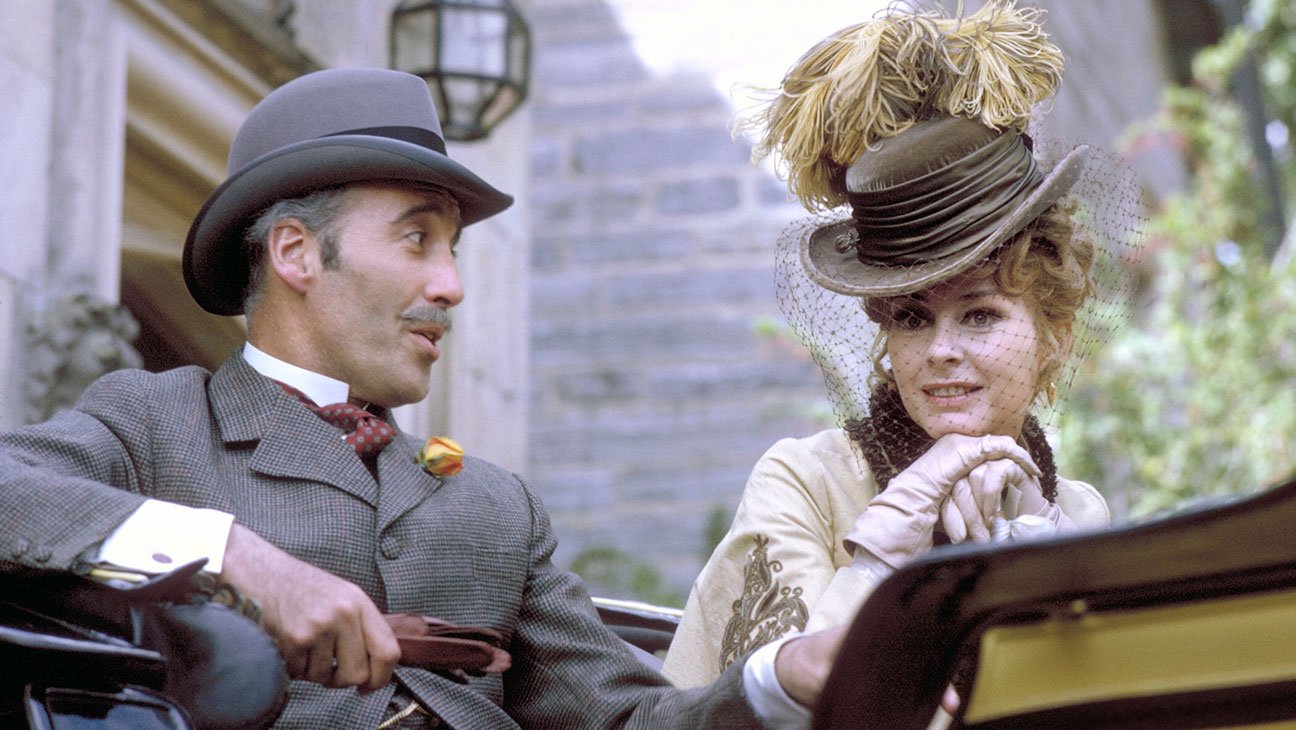
Billy Wilder’s (who directed and co-wrote) film outing starring Robert Stephenson as Holmes and Colin Blakely as Watson is something of a cult favourite. This is perhaps due as much to the missing parts of the film as it is to the finished article.
The plot is comprised of two separate stories the main one of which involves the apparent sighting of the Loch Ness monster and the covert building of a submarine. Adding to the appeal of the film is Christopher Lee’s role as Mycroft Homes.
However, the ‘private life’ of the title remains underexplored as two of the film’s stories, one involving an upside down room, the other a flashback to Holmes’ university days are no longer present in the final film. Although, the region 1 DVD release apparently features the upside down room section and several other missing scenes now restored.
Whilst the plot(s) sound interesting, and the performances are certainly fitting, the finished article is understandably a little disjointed and veers too far into parody. It remains an interesting, curious, enjoyable but arguably over-contrived addition to this list. BBC Sherlock co-creator Mark Gatiss has cited it as an influence for the Cumberbatch adventures.
9. They Might be Giants (1971)
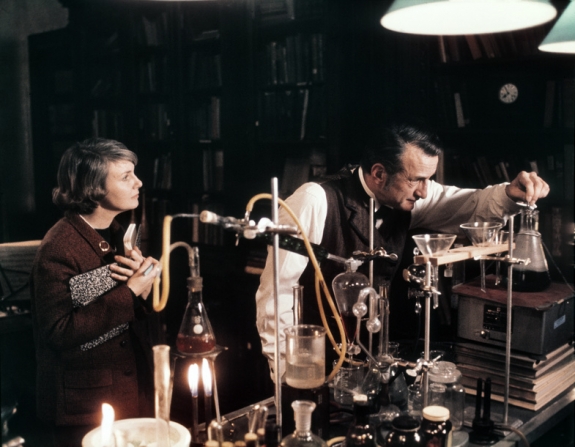
An interesting addition to the list as the lead character, a widowed millionaire, (played by George C. Scott) actually only believes himself to be Sherlock Holmes. He is assisted in his quest to find Moriarty by psychiatrist Dr Mildred Watson (Joanne Woodward). Based on the play by James Goldman (who also wrote the screenplay), the story focuses more on the relationship/interaction between the two leads as ‘Holmes’ follows a series of impossible clues.
Scott is enigmatic enough in the role of Holmes, complete with pipe and deerstalker as he follows an unfathomable trail through 1970’s Manhattan. The audience eventually, like Watson, are willing to enter the fantasy and join him on his meandering journey.
This is a tale with a heart; there are moments of revealing character deduction from both parties, whilst the pace is a little slow at times it becomes engaging enough to reward the viewer by the end and proves more rewarding with successive viewings. The psychological spin and Holmes’ search for a ‘Moriarty of the mind’ makes the film in some ways comparable to elements of The Seven-Per-Cent Solution.
The title is reference to Don Quixote’s delusional charge at the windmills believing them to be giants. The premise being that if we never believed things to be something other than they are we would never step forward and discover something new. The audience, like Mildred Watson must believe in ‘Holmes’.
Despite the loyal cult following the film has now gained (the U.S band taking the title for their own name) Goldman always felt the play never quite worked. The film remains a polished piece in its own right, with fitting music from John Barry. To add to its cult status full uncut 98min versions available to the public would seem tricky to source – video and DVD releases are missing a penultimate scene in a grocery store.
Whilst a more recent Netflix screening apparently features this scene but still runs short (91mins) compared to 96min televised versions from the1980s. Curiously, more recent U.K screenings on Film 4 do feature the grocery store scene.
8. Basil the Great Mouse Detective (1986)
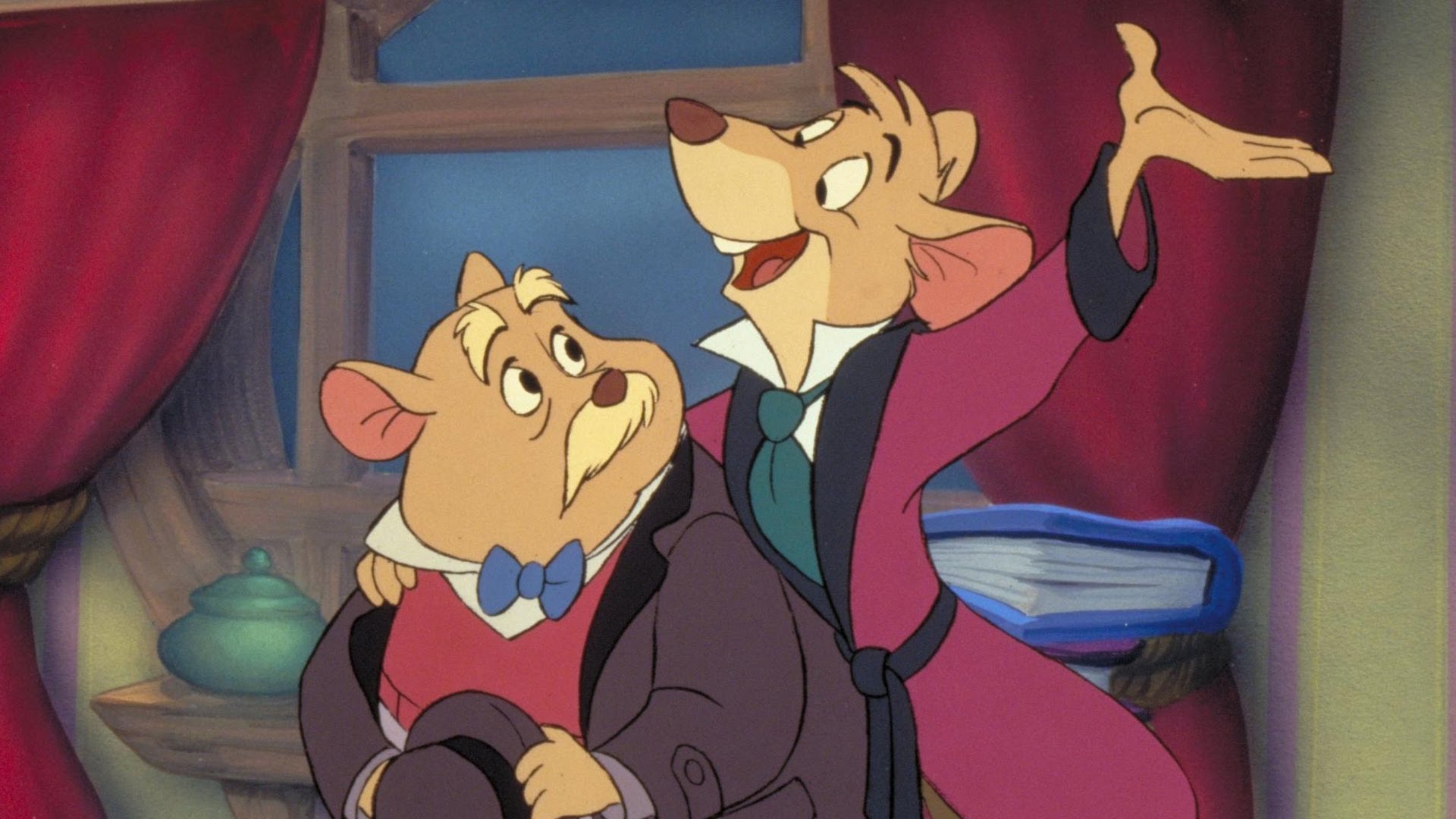
Possibly a controversial entry to the list for some but this Disney animation from 1986 has much to recommend it. Also known as The Great Mouse Detective and The Adventure of the Great Mouse Detective (depending on county and slightly altered titles for a 1992 home video re-release), the film is derived from Eve Titus’ series of children’s’ books Basil of Baker Street. Famous mouse detective Basil is assisted by Dr Dawson to foil a plot by arch villain Rattigan to take over England using a mechanical queen.
There are clear parallels to Basil Rathbone’s Holmes and Nigel Bruce’s Watson throughout, indeed a recording of Rathbone’s voice (19 years after his death) is used at one point of the film as we overhear the actual Sherlock Holmes reading a letter. Basil in the film is voiced by Barrie Ingham with Vincent Price well suited to supplying the tones for arch villain Rattigan.
Arriving on the screen a few years towards the end of Disney’s ‘black period’ and prior to their renaissance the film has been brushed aside somewhat. It followed on from the financial disaster that had been the previous year’s The Black Caldron, Basil the Great Mouse Detective was a thankful success at the box office, despite the failure of its predecessor leading to the slashing of its own budget during production.
However, regardless of the engaging plot, the treats for both Holmes and film fans, fine voice performances and a score from Henry Mancini, this final traditional cell animation from Disney does betray itself with evidence of financial caution and corner cutting.
The sketchy still background during a barroom sequence early in the film where only Basil and Dawson are animated is just one example of this.
Although the thrilling final ‘Big Ben’ clock tower action sequence (possibly drawing from 1979’sThe Thirty Nine Steps) does feature Disney’s first use of CGI animation (The Black Caldron was however the first to be released) as part of its impressive moving clock cog scenes, this does leave one to speculate if more CGI had been planned in with the original budget. The pedal powered flying machine in this end sequence also links to Young Sherlock Holmes.
A film outing Disney shouldn’t be ashamed of and a welcome addition to this list of Holmes must sees.
7. Sherlock Holmes (2009)
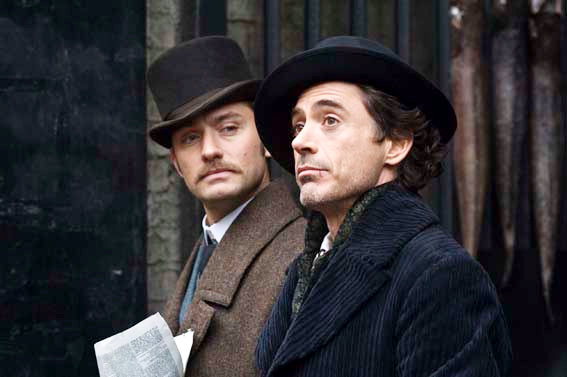
The teaser trailers for director Guy Ritchie’s first Holmes film which featured Sherlock stripped to the waist bare-knuckle boxing, and then describing via narration and slow-motion replay the effects his blows were having on his opponent, sent purists into fits of distain. However, the finished film starring Robert Downey Jr with Jude Law as Watson is a commendable production and enjoyable Victorian adventure.
The plot follows an investigation into a ritual killing which develops into a grander quest to prevent a mystic taking over the British Empire by supernatural means, this comes to a thrilling conclusion set on top of a partially constructed Tower Bridge in London. Part comedy-action film and part mystery thriller, the film succeeds in ‘updating’ or rather ‘reselling’ the Holmes franchise to a broader, popular audience – there is a careful balance of the broad genres here.
The film also looks right, whilst Downey won a Golden Globe for best actor in a Musical or Comedy, the production was also nominated for best Art Direction – inevitable losing out to impossible competition from Avatar.
Jude Law makes his second appearance in a Holmes adventure, his first was a small but significant role in the 1991TV adaptation of ‘The Adventure of Shoscombe Old Place’ with Jeremy Brett. Downey had suggested to Ritchie that they draw from John Watson’s military backstory to avoid the typical Watson stereotype – Russell Crowe was initially visualised in this role.
Rachel McAdams also features as a love interest and former adversary for Holmes, named and developed from Irene Adler the woman who outwits him in Conan Doyle’s A Scandal in Bohemia.
The scene in which Homes plays the violin to a jar of fleas is a replication of the same moment in 1939’s The Adventures of Sherlock Holmes. The film was followed by a sequel ‘Sherlock Holmes: A Game of Shadows’ in 2011, this arguably lacked the same balance of action and plot and weighed too heavily on stunts and spectacle.
6. Young Sherlock Holmes (1984)
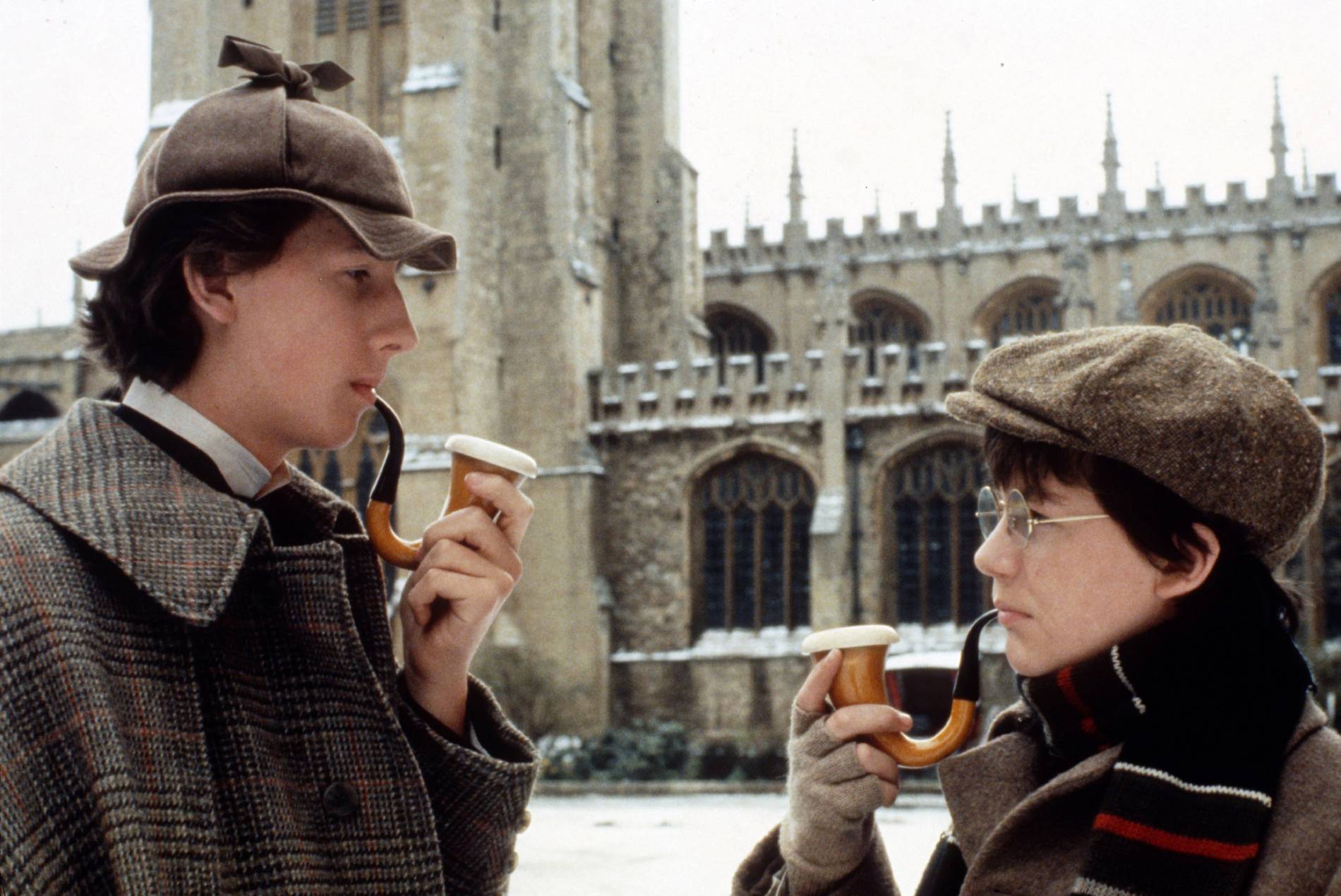
‘Holmes is going to solve the crime!’ Declares a jolly schoolboy from a side window of an English boarding school, and indeed he does, as a teenage Homes (Nicholas Rowe) becomes acquainted with new boy John Watson (Alan Cox) as the duo take on an underground Egyptian cult in snowy Victorian London. In an original story, Chris Columbus’ script re-imagines the first meeting of Holmes and Watson at boarding school.
Columbus has stated that he experienced some anxiety when approaching the script – effectively disregarding Holmes and Watson’s first meeting as described by Conan Doyle in order to devise the film. He did however want to make a film which still appealed to the Holmes purists. The result is a well-paced mix of mystery, action, comedy, adventure and coming of age.
With a commercial eye it is comparable to other young adventure films of the time, notably the Goonies, Young Sherlock Holmes being historical it has perhaps dated less in terms of production – Victorian London never seems to go out of fashion.
Although, in a story with some enjoyably gruesome hallucinations, the opening one of which attracted a series of complaints when the BBC screened it on UK TV one evening in the run up to Christmas, just how young its intended audience were at the time is questionable.
Also notable is the early (some sources state first) use of ‘Pixar’ Computer Generated Animation as a knight in a stained glass window comes ‘to life’ – this was created for Lucasfilm by the now chief executive of Pixar. Visuals aside, there is some genuine character and depth to the script, the young Holmes of this story possesses all the powers of deduction fans are familiar with but here he is frequently emotional and impulsive with the outcome of a romantic subplot going someway to explain the cool nature of the older Sherlock.
At one point in the film, Holmes suffers a hallucination and viewers are treated to a speculative piece of darker backstory, the tone of which is quickly lighted as Watson appears to almost suffer ‘death by cream-cake’. A must for any Holmes fan, the cast features Nigel Stock as Holmes’ mentor, the eccentric Professor Rupert T. Waxflatter, his flying bicycle invention to some extent echoing E.T from a few years previous (the film was also produced by Amblin) and fills the wacky invention quota perfectly.
Stock had previously played Watson in the 1965 T.V series of Sherlock Holmes. A young Sophie Ward also features as Holmes’ love interest and also Freddie Jones as an old associate of Waxflatter’s, but it is Rowe who is most striking here, well cast in appearance and manner as the young sleuth.
From time to time internet rumours circulate regarding Rowe taking up the role once again – this was notable in the rumblings of what was to be the Guy Ritchie Holmes. His appearance in 2015’s equally original Mr Holmes was a bonus for fans of Young Sherlock.